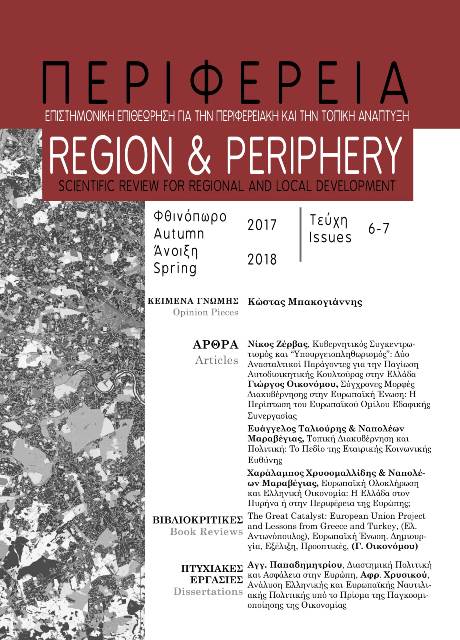Regions and business cycles’ synchronization: Aspects, trends and perspectives

Abstract
Τhe proposed article aims to capture the potential of the Greek Regions, in terms of their contribution to the national product, and to present the regional business cycles of the country as well. The key research question is the investigation of the existence of synchronization between regional business cycles on the one hand with the national cycle and the corresponding Attica’s cycle on the other, over a certain period of time (1970 to 2010). While the key challenge of regional policy is the regional convergence and the balanced regional development, there is evidence based on the regional gross domestic product trend, which reveal a different aspect. Individual regional cycles present asymmetric economic fl uctuations compared to the national and the Attica’s cycles, implying divergence for considerable periods of time. Evidence of business cycles synchronization appear for all thirteen Regions in the early 1970s and after the years 2005-2006, coinciding with aspects of the economic contraction that began to emerge progressively at that time.
Article Details
- How to Cite
-
Οικονόμου Γ., & Ασημακόπουλος Μ. (2013). Regions and business cycles’ synchronization: Aspects, trends and perspectives. Perifereia | Regional Integration: Politics, Economics, Governance, 3(3), 11–36. https://doi.org/10.12681/rp.18897
- Section
- Research Articles

This work is licensed under a Creative Commons Attribution-NonCommercial 4.0 International License.
Authors who publish with this journal agree to the following terms:
· Authors retain copyright and grant the journal right of first publication with the work simultaneously licensed under a Creative Commons Attribution Non-Commercial License that allows others to share the work with an acknowledgement of the work's authorship and initial publication in this journal.
· Authors are able to enter into separate, additional contractual arrangements for the non-exclusive distribution of the journal's published version of the work (e.g. post it to an institutional repository or publish it in a book), with an acknowledgement of its initial publication in this journal.
· Authors are permitted and encouraged to post their work online (preferably in institutional repositories or on their website) prior to and during the submission process, as it can lead to productive exchanges, as well as earlier and greater citation of published work.




